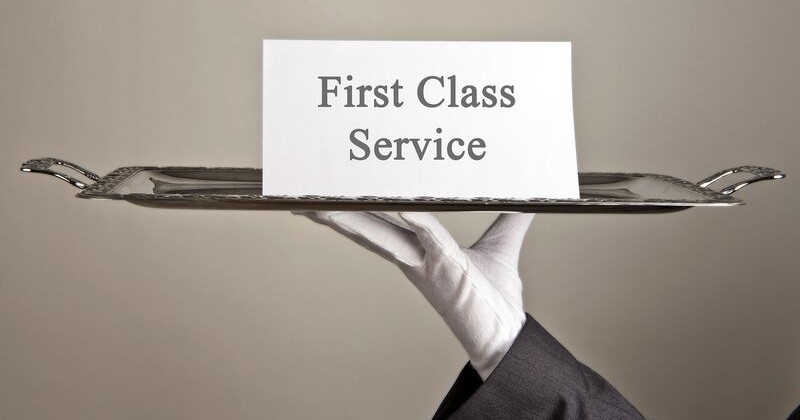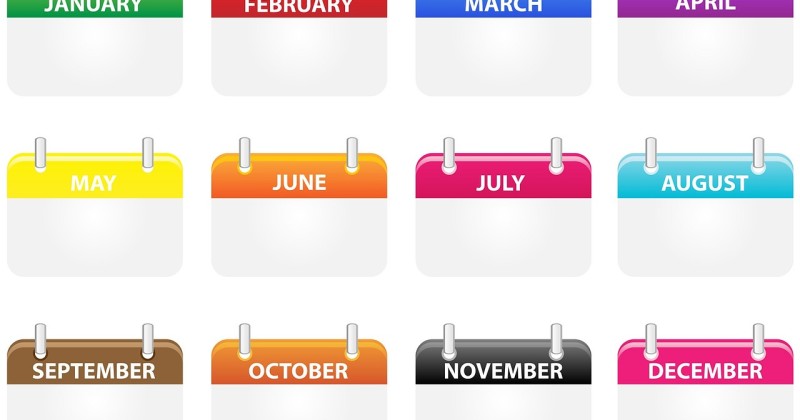In this video I’m sharing my tips on how to plan what you need to consider technology wise when you’re planning a launch.
Want the Launch Class download? Just enter your name and email below to get instant access:
Find the systems you need to grow your business
In this video I’m sharing my tips on how to plan what you need to consider technology wise when you’re planning a launch.
Want the Launch Class download? Just enter your name and email below to get instant access:

Last week I drove into Sacramento to pick up some printed materials and left the small, independent shop disappointed. The copies I picked up were beautiful but the interaction with the shop owner was cold and impersonal and he barely spoke two sentences while I was in the store.
While this was a personal order of just $100 (memorial folders for my cousin’s funeral) the owner of this business could have easily won my loyalty and much more business with a few simple questions.
Such as,
1. “I’m so sorry for your loss, is there anything else I can help you with today?”
Simply acknowledging why the copies were needed would have been huge and shown that they actually paid attention to what was coming off the printer. Also I did have more copies of another sheet to run and spare time so I could have done it right there boosting the sale just a bit. Instead I was confused at how cold and aloof the owner seemed, as if I’d interrupted much more important work.
Remember that when the client is in front of you, he or she is the most important person in the room. Always offer additional support (without being pushy) to exhibit that you care and have other services available.
2. “How did you hear about us?”
This was my first time in the print shop and I was certain I’d be asked this question. If I’d been asked the owner would learn that the window display (on a busy Sacramento street) with their pricing on color copies caught my attention. I’d additionally asked a client of mine who used them and loved their output and pricing before calling for a quote.
Understanding what marketing tools are working is essential to a small business. If no one in 5 years has ever found you through that bench ad, stop running it! More importantly, the answer to this question would have given the owner new insights into me, his new client.
3. “Are you a business owner? Do you often need printing for work related marketing materials?”
Okay so this is two questions, but by describing myself as a business person with clients the owner now has the opportunity to see if I’m open to business related printing in addition to this personal order. In a short period of time he may have learned that I run a business, often print business cards and marketing materials, and would be interested in a local supplier if the prices were competitive and turn around time shorter.
While I don’t know why I got the cold shoulder when picking up this order, I do know that it effectively squashed any business relationship that could have formed. I understand that sometimes we’re just not in the mood to talk, or having a bad day, even that we think this one off client is no one we need to woo. But just asking a few simple, leading questions may not only lead to more business but give the client a positive impression of your business. These are simple leading questions to find out if the person is an ideal client – don’t assume! Even if they’re not ideal they may be an ambassador for you to your ideal clients.
No one wants to get their bill at a restaurant and hear, “now pay and get out.” We appreciate the smiling hostess who says, “thank you for coming! Hope to see you soon!” with a genuine smile.
Even if you’re a regular grumpy pants, take the time to ask these questions to every client who comes to your business and build a relationship. And you’re not off the hook if you run an online business because these questions can absolutely be translated for you as well.

Instead of my regular post today I decided to share yesterday’s newsletter about a personal tragedy in my life instead because I got such an amazing response. Each week I share fresh content, action steps designed to help you implement systems in your business.
This has probably been one of the hardest newsletters to write for you, in part because I’ve spent so much time this week off work with my family.
On September 22nd my cousin died in his sleep and our family is still in shock. Justin was just 26 and leaves behind a 2 year old daughter, and we’re staying pretty close as a family to share memories, talk, cry and grieve.
In today’s articles I want to share some examples of how my business has changed and supported me during this difficult time, to hopefully inspire you in your business.
Three and a half years ago I was working a corporate job when my Grandma passed away from Alzheimer’s Disease. It was quite rough for me, her caregiver, but dealing with a difficult employer made it worse.
I needed time off to be with the family and my Grandpa as well as complete the service folder and slideshow. Not to mention the actual funeral. Instead of understanding, my employer refused to let me take my vacation time (which was illegal) and expected me to come to work the afternoon after the funeral.
You may think that the solution was starting my business…
Two years ago when my Grandpa passed away I was in a much different business model serving just two clients exclusively. Their businesses took up a lot of my time and I once again ran into trouble when needing time off.
I gave so much of my time to these clients that I actually felt guilty that I took the day off for the funeral service (and it was a Saturday!).
And while I hate that once again we’re dealing with a death in the family, I am so grateful that things are so different in my business.
I’ll give some specific examples below but I’ll just say that because I have systems in my business that work for me, I don’t need to exhaust myself putting in overtime just so I can attend a funeral. I don’t feel guilty about the time I spent with my cousin’s daughter or helping prepare for his service. I am so thankful for the support I have in my business which allows me this flexibility.
Most of all I am grateful that even taking this time off to be with my family, my business keeps going and serving all of you. That the resources and systems I’ve spent hours setting up are continuing to work this week and next and the one after that.
I hope that your own business is set up in a way that enables you to have the freedom you want and need. If you need support continue reading below for 3 Action Steps you can implement today which will give you more flexibility and freedom.
I love these three systems because they don’t just work in an emergency – they serve my business every day!
System #1 Scheduling Calls
With new clients coming on weekly, existing client calls, networking with colleagues and managing a lot of content and teaching time, my calendar is pretty full and it can be hard to find time to talk with everyone!
So I fully transferred control of my calendar to my talented VA knowing that scheduling calls was not only a huge time suck but really difficult when rescheduling came up. Not having to dread 10 conversations about why I needed to cancel in order to attend a funeral was additionally helpful.
Action Step: Continue to watch, or re-watch, the 5 days to Finding Fabulous Help video series and write down how an assistant can manage your calendar and scheduling. It will change your business!
System #2 Regular Marketing
Monday I sat down to reply to new subscribers (something I do regularly because I honestly appreciate when someone opts in to learn more about systems!) and realized that I had lots of “action” in my marketing despite not being focused on it. Regular postings like my Facebook Tips, twitter and guest posts all went out automatically.
Once you build up the momentum, like pumping your legs on a swing, if you stop for a little bit the momentum will continue to carry you for awhile.
Action Step: Add one time block on your calendar right now to create tweets or pre-schedule a blog post for the week ahead. Getting a little ahead like this is a great practice.
System #3 Sales
Although I’ve had a big change in my life there are so many clients and leads who still need support in their businesses this week. By having Sales Systems in place I can easily send out proposals, contracts and invoices to my new clients in much less time.
While this helps me to keep the business going, much more importantly it allows my clients to get support uninterrupted.
Action Step: If you don’t yet have a template proposal and contract create one today. You can re-save an older one and take out the client specific information. This will save you so much time!

Work life balance is a hot topic, recently I shared my own experiences with the New York Times and ever since this subject has come up more and more frequently.
Last week I enjoyed some downtime in Ft. Lauderdale after an amazing conference – it was so relaxing to watch the sunrise from the beach after 3 days waking early to spend hours working on my business.
While we did have some down time, I decided to record some thoughts about life and work balance. In this video I share a little about my vacation time in Florida and my secret weapon to relaxing when I’m away from my business.
If you didn’t take time off this summer then maybe it’s time to look for support so you can enjoy a break! Check out my free video series 5 Days to Finding Fabulous Help for Your Online Business by filling in the boxes on this page!
[wpevp id=”evp-1cd43593f60b9d6bc3f5ac7c37a3e65d-wrap” class=”evp-video-wrap” src=”http://kellyazevedo.evplayer.com/framework.php?div_id=evp-1cd43593f60b9d6bc3f5ac7c37a3e65d&id=bGlmZXdvcmtiYWxhbmNlLTEubXA0&v=1348111480&profile=default” init=”bGlmZXdvcmtiYWxhbmNlLTEubXA0%%LBRACKET%%evp-1cd43593f60b9d6bc3f5ac7c37a3e65d%%RBRACKET%%” /]
If you missed the New York Times article you can read it here: Straightening Out the Life Work Balance

Whenever I hear conversations about automation it always conjures up images of robots taking over the world. And while I would love to have Rosey (the maid robot from the Jetsons), the idea of turning my business over to machines just feels wrong. Out of touch. Cold.
What if I told you that marketing and business automation is all around you and, in many cases, free?
First, let’s talk about why you should even care. There are times when we are out of the office and no matter how good our intentions we’re just not going to do any work. And that’s good, even healthy!
But there are also times when we know things are going to get hectic with conferences, speaking, client projects and by planning ahead and automating we can relieve some of that stress!
The best news is that automation doesn’t have to be cold and impersonal. Personally, I love automated services like Aweber because I’d never have the time to reach out to hundreds of you each week. With newsletters, blog posts and social media you can reach far more people than manually doing it all yourself.
Easy marketing automation includes tools such as Facebook pages, which now allow admins to pre-schedule posts like my popular 5 min or less System Tip of the Day, and Hootsuite for Twitter which has recently introduced posting for LinkedIn, Google+ and of course Facebook.
What about business automation for everyday business tasks? My biggest challenge has been email! So I spent six months handling the chaos and finding systems for email including filtering, automatic responses and forwarding. Now I don’t dread being out of the office for a week!
As much as possible I look for software and tools that help me manage and maximize my time. When something absolutely needs hands on attention I work with my virtual team to support me. The tasks may not be automated but we do use Asana to assign regular tasks and check in each week. If you don’t yet have my free 5 part video series “5 Days to Finding Fabulous Help for Your Online Business” then you can request it here and start working with a team who can “automate” many business admin tasks and free up your time for more content, conferences or clients.
If you’ve been in business for any length of time you’ve probably seen and heard about Infusionsoft. To help you get started I talked to marketing automation expert Patrick Conley about his recommendations:
Patrick, what makes Infusionsoft different?
Infusionsoft is an amazing program that helps you automate your marketing all in one great software package. It handles basic needs of email marketing like Aweber or Mailchimp, but allows you to apply some really fantastic control over who gets your emails based on their actions.
How do clients use Infusionsoft?
For clients selling products, you wouldn’t want to re-sell them on the same product that they already bought. Instead, you can “tag” your recent buyers so that you only follow up for another sales attempt for customers that haven’t bought on the first push. The best part of Infusionsoft is that it really covers all of the bases when it comes to your business in a super automated way. You can handle emails, CRM, product sales, and an affiliate program all within one bundle.
Infusionsoft sounds really comprehensive, should everyone have it?
That’s a great question, and one that comes up with a ton of entrepreneurs that I work with. For the typical business just getting started with online marketing, Infusionsoft might be overkill. Especially since there are some other really important aspects of business to work on.
How do you help business owners decide if Infusionsoft is right for them?
The software is an investment and it’s important to be able to see some ROI soon after investing so that it doesn’t stress you out too much. However, if you’re running a business that is really looking to launch in a big way and you don’t want to mess with switching software systems, it might be smart to start off with Infusionsoft right off the bat.

One of my favorite systems to set up for private clients is a marketing and editorial calendar. If you don’t yet have one here’s 4 great reasons to start one today and a bonus tip to take action.
1. Eliminate blank page syndrome
Every writer knows this pain! The blank page is hard to overcome so by tapping into your creativity when you’re full of ideas it’s much easier to pick one up later. I also believe that when you know you’re writing on something next week you’ll begin to unconsciously think and reflect on what you want to say, allowing the words to flow out easier when you sit down to write.
Especially if writing is difficult for you, having a plan is very helpful to getting your ideas flowing.
2. Cultivate lots of ideas, keep the best
I keep a running list of blog topic ideas online which is continually getting refreshed. Sometimes, however, I look back and think “why would I want to write about that?” By continually throwing ideas out you’re able to zero in and isolate the ones that are most compelling and exciting to share. No more forcing yourself to write about something boring or off topic because you have no other ideas.
3. Plan ahead
One of the biggest frustrations in business is not knowing your next step. Often times a marketing and editorial calendar will change but simply having a starting point is comforting. And when someone (like your coach) asks how you’re marketing your business you don’t have to sweat it. Simply consult your calendar and say “blog post on Tuesday and my regular ezine Thursday. Twitter and LinkedIn posts twice a day and I’m launching a new teleclass at the end of next week with email and blog announcements.”
This week I’m in Florida for a conference. But weeks ahead of time I knew that I’d want a blog post to share today and, thanks to my editorial calendar, I was able to plan, write and queue it before leaving. Why not just take the week off? Well, keep reading to find out.
4. Consistency is key
I’m sure you know websites that have great content but 9 times out of 10 when you check them it’s the same old post that’s been up for months now. No matter how genius the content is, if it’s not consistent then you’ll continue to learn elsewhere, maybe checking back occasionally for nostalgia.
Having a consistent presence is not only important for trust but also reliability. No one wants to invest in a business that’s here today, gone for six months. While I do believe in providing consistent value, I’m also a fan of transparency. It would be out of my personal integrity to post as if I were home in California this week but despite my travel schedule consistent content and value is important to exhibit.
In this video I give you my “Cheap n’ Easy 4 Week Plan to Promote Your Launch” and explain how you don’t need to spend a ton of money or get overwhelmed to get out there bigger than what you’re doing now.
If you’ve read my blogs about launching, you know that there are secrets to succeeding in a launch and while the wins are big, the flops are sometimes even more telling. Did you know that McDonalds has spent upwards of $100 Million in some of their launches on failed products? You don’t have to spend that kind of cash or have a commercial during the Superbowl to promote your business.
Watch and jot down your next step to get your product, program or service launched!

If you haven’t yet read, the New York Times recently ran a feature titled When Life-Work Scales are Unequal for which I was both interviewed and photographed. This is my behind the scenes story of the opportunity, interview and photo shoot as well as a chance to give more context to my comments. Space is limited in the NYT but not here!
(If you want to check out the article you can read it here)
I would like to thank Hannah Seligson who I believe did a suburb job with a delicate subject and amazing NYT photographer Jim Wilson who was so fun to work with and had the idea to bring my dog Wilson into the shoot!
While I do believe in life work balance I know it’s different for every person so it’s not the job of the boss or owner to ensure that you achieve the right balance. Every time we assume that, we choose to give our power to someone else and make them the keeper of our time, happiness and life. No matter what kind of imbalance you think exists in your company, I firmly believe that we must stand up for ourselves.
As such I chose to take 100% responsibility for my lack of life and work balance earlier in my career. It’s true that I used to have zero boundaries on my time, giving so much of myself to work that I didn’t see the doctor when I was sick, I didn’t heal well after my car accident and I certainly didn’t have time to develop myself instead of giving so much to a business that wasn’t even mine.
I wanted to share this because I see so many talented people making my mistakes and it’s time we speak up.
In an effort to avoid finger pointing, I decided not to share names or time frames for the businesses I’ve worked at beyond general descriptions. Part of the relief of moving past such imbalanced relationships is that I am no longer (overly) emotionally invested in their success. While I wish these former companies well it’s not my place to call attention to problems which existed in the past. Instead I choose to focus on my own business and helping my clients find their own balance.
I think one of the many problems with achieving life and work balance for all people is that we’re not honest about the unspoken messages that are shared within our businesses.
Which brings me to the “after” part of this story – while acknowledging there’s a problem is incredibly important, I know you also have to move beyond that to healing it. Now, as owner of my own business, I am wholly responsible for finding and maintaining the balance in my life. Sometimes it’s much harder than it used to be, my office is just across the hallway and being online means work is always there, ready to creep in.
The proper life/work balance is something that no one else can decide for you. While I understand the article was the beginning of the discussion, I want to provide my own tips list on creating solutions.
Are you interested in how this all came about?
It all started in July, ironically through Facebook in the middle of my “no social media challenge.” So yeah, I was cheating on the challenge when I saw a post from my colleague and the YEC co-founder Ryan Paugh about sharing work/life balance stories.
While I have no problem talking on the record, I was also aware that the last thing I wanted was to begin mud slinging with the former companies I’d worked for and – this was important – I wanted to share how things had changed me for the better in my own business.
So I sent off a quick email to Ryan and was soon introduced to Hannah, a wonderful reporter who was both friendly and exacting in her interview. At this time I had no idea who the article was for but I was happy to discuss because I know this is a big issue.
Additionally, I introduced Hannah to my colleague Lily Starling, with whom I’d discussed this subject many times. It wasn’t until Lily had her own interview on the subject that we learned the story was for the NYT.
Several weeks later a final round of clarification happened via email, at which time Hannah noted that the photographer would be contacting me for the shoot. Knowing that I wanted to have an outdoor shoot and glad to have a deadline, I revamped my outdoor patio (which I’d been using for work now for several years during good weather).
On Monday, July 30th I met Jim Wilson and we completed the shoot at my house including my docile dachshund, Wilson, in the photos. It was nerve wracking and fun all at once. Over the last week I spoke with Hannah for final fact checking and quotation confirmations for the edited article.
Many of my colleagues have asked how I came about this opportunity and I hope this answers some of those questions. I wanted to highlight a few things I learned:
If you’re curious about the work I do I encourage you to check out my Programs or get a taste of systems for your online business with free Tools and Classes. Because I love sharing my experience, mistakes and ideas I participate frequently in Media and if you’d like to connect personally just Contact my Team for details.

When you’re in a launch it’s easy to get overwhelmed by how much there is to do and often I talk with entrepreneurs who say that they will keep their cart open “as long as it takes.” Learning how to launch involves knowing when you should start a launch but also when to end the launch and in this video I share how you can determine 2 of the most important launch dates for your business.
Watch the video below to check out my new reusable Launch Calendar that I’m utilizing when creating launch sequences and plans for my clients as I show you the two most important dates for your launch!
Your launch start date is often determined by the best time of the year and week to announce a new offer and should be added to your launch calendar once you know what other things need to be done. If you choose a launch start date next week then you’ll likely be overwhelmed and quit before you start.
Equally important is your launch end date to give a deadline for buyers and to close out your launch. Putting the end date on your launch calendar can help you design your marketing messages for the launch.
Using a calendar like mine allows you to move around the dates easily when you’re in the planning stage. If you don’t have a white board or idea paint on your wall try creating a calendar on a sheet of paper and then marking your dates using Post-It notes to denote the events that happen in your launch.
While this video introduces 2 dates, you’ll also want to include others such as:
I hope you enjoyed this video about launching – there’s more in our launch category here on the site including posts to decide what technology you need for your launch and setting a budget for your launch.

Y’all know that I’m a systems gal and one of the things that really tests my application of systems in my own life and business is going out of town. Because it’s really easy to have everything running smoothly when you have an entire office at your disposal but on the road it’s much harder.
So today I want to share how you can prepare for you next conference both physically and mentally.
For me this is the paramount question because once I know that the “things” are ready I can fully focus on engagement. I start with a specific packing list, whether for vacation, a conference, a workshop, wherever this trip is taking me. It’s pretty simple to start, just write down all the things you think you’ll need at this conference and when you get home review the list and add or subtract items.
A physical packing list will help you ensure you don’t show up without business cards, your cell phone charger or no dress shoes but just as important is making sure you show up ready.
Let’s face it, a conference is a germophobe’s nightmare. Lots of people from all around the country crammed into one space sharing the same creamer and bathrooms. The last thing you want is to be stuck in a hotel room sick or in such a daze that you don’t engage with the conference teaching or networking opportunities.
In the weeks before the conference focus on self care. Wash your hands thoroughly (especially when traveling), take your vitamins and eat well, exercise in the days leading up to an event and stay hydrated with lots of water. It’s temping to pile on the stress before leaving for an event, thinking that you have to prove something or complete all open projects. But staying up to all hours of the night using coffee to stay awake while you push to finish another project will leave you drained and exhausted when it’s conference time.
Rest plays a huge part in both your physical and mental preparedness so make sure you’re sleeping well and taking time to adjust to a new time zone if you’re traveling far.
While most people appreciate the physical prep for an event or conference, most will neglect the emotional and mental preparation. It’s easy to do because the external is what we show to the world but the internal work, that’s what will transform our lives and businesses.
It’s easy to say “I’m going to get 3 new clients” or “I’ll pass out 1,000 business cards!” when it comes to setting goals but it’s also very tempting to get overly enthusiastic and then discouraged when reality happens. Instead of making expectations of yourself or the event, set intentions. Here’s the difference:
Expectation: I’m going to get 3 new clients this weekend who’ll pay me $10,000 each and then refer me to 5 new clients!
Intention: I will remain present and engaged with the people I meet to discover if they’re my ideal client and if I’m their ideal coach.
Another example:
Expectation: I’ll have a huge breakthrough and cry at the microphone and get sudden clarity on my business vision.
Intention: By taking in the content, staying open to the wisdom of other attendees and engaging in the work I will discover new clarity.
I prefer intentions because it looks inward, what will I do, instead of focusing outward with expectations.
Once you set your goals, the hard part begins. There are typically so many distractions between the travel, sponsors, the content, meals, friends, colleagues, networking, partying, hotels and more that it’s easy to let an event go past without engaging in the actual work.
So here are a few additional tips on staying present and accounting for your focus during an event.
It’s okay to break the rules and not do every assignment if you’re exhausted and need rest. Or go to lunch with friends who know your business instead of strangers who can’t remember your name. It’s okay to network in the hot tub or spend the evening watching television alone. The conference coordinators are giving their suggestions that will work for most people so reflect on what you need in the moment and accept if it derives from the advice given.
If you’re at an event where you know few people set a small goal to meet 5-10 new people each day to share something you’re learning. By focusing on what the event is teaching you, you’ll have relevant and fresh topics of conversation.
However, if you’re attending a conference surrounded by familiar friends and colleagues be sure to guard your energy. Instead of checking in with everyone to find out what they’re learning, what support they need, if they’re filling out their workbooks, give all your attention to your business and personal development. Remember that you’re not attending as conference support, you’ve paid and traveled for your own edification.
It’s okay to let people know that you can’t coach them, or support them throughout a multi-day event because you’re focusing on your own transformation and education because the purpose of such attention and focus is so you can become a better professional and that ensures long term support for your clients.
Finally, a mix of strategic planning and mental preparation in this final tip: Set aside at least one entire day when you return to sort through your notes, reach out to new contacts and reflect on what you’ll be implementing in your business from the conference. It’s very easy to jump right back into your day to day business but setting this time aside will help you solidify the intention to grow during the event. You’ll be looking for the things you want to explore in detail or implement so star or highlight them so when you review they’ll stand out to you.